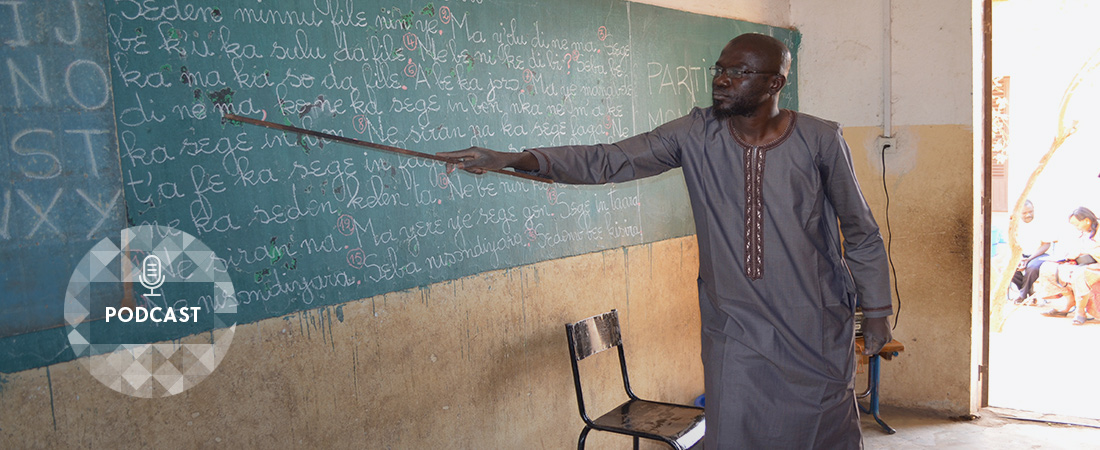The Road to Reading in Mali

Listen in as our experts discuss a wide range of current topics. Check out all of our podcasts.
In urban public and community schools throughout Mali, it is not unusual for 100 children to share a single teacher or for classrooms to have few, if any, books. But after only three years of implementation, EDC’s USAID-funded early literacy project, called Selective Integrated Reading Activity (SIRA), is showing that these challenging circumstances do not have to be barriers to children learning how to read and write.
In this podcast, EDC’s Thelma Khelghati discusses why the approach of the SIRA project has been so successful at promoting high-quality literacy instruction in low-resource environments. She also shares some of the positive feedback that she has received from parents.
On the impact that SIRA is having in Mali
Khelghati: When we did the baseline [study] in 2015, only 3.2 percent of children could read according to the Ministry’s standard. And at the midterm, we were at 13.7 percent. So it’s about an 11 percent gain. . . . It’s been exciting to see. All the time, parents tell us, “I have four children in school, and this is the first time my child has been able to read and write at the end of second grade.”
On the importance of teaching literacy
Khelghati: I often say that this work is a question of justice. The children in public and community schools are children whose parents are too poor to send them anywhere else. . . . I think the government has an obligation to provide quality education so these children have a path out of poverty.
On what can be learned from SIRA’s success
Khelghati: [T]he techniques that are being used are effective techniques for learning how to read: the emphasis on building all competency areas simultaneously, rather than concentrating on only one thing; the emphasis on developing reading and writing skills at the same time; and the use of audio—because it’s much more stimulating for children to be able to listen to games and songs and rhymes.